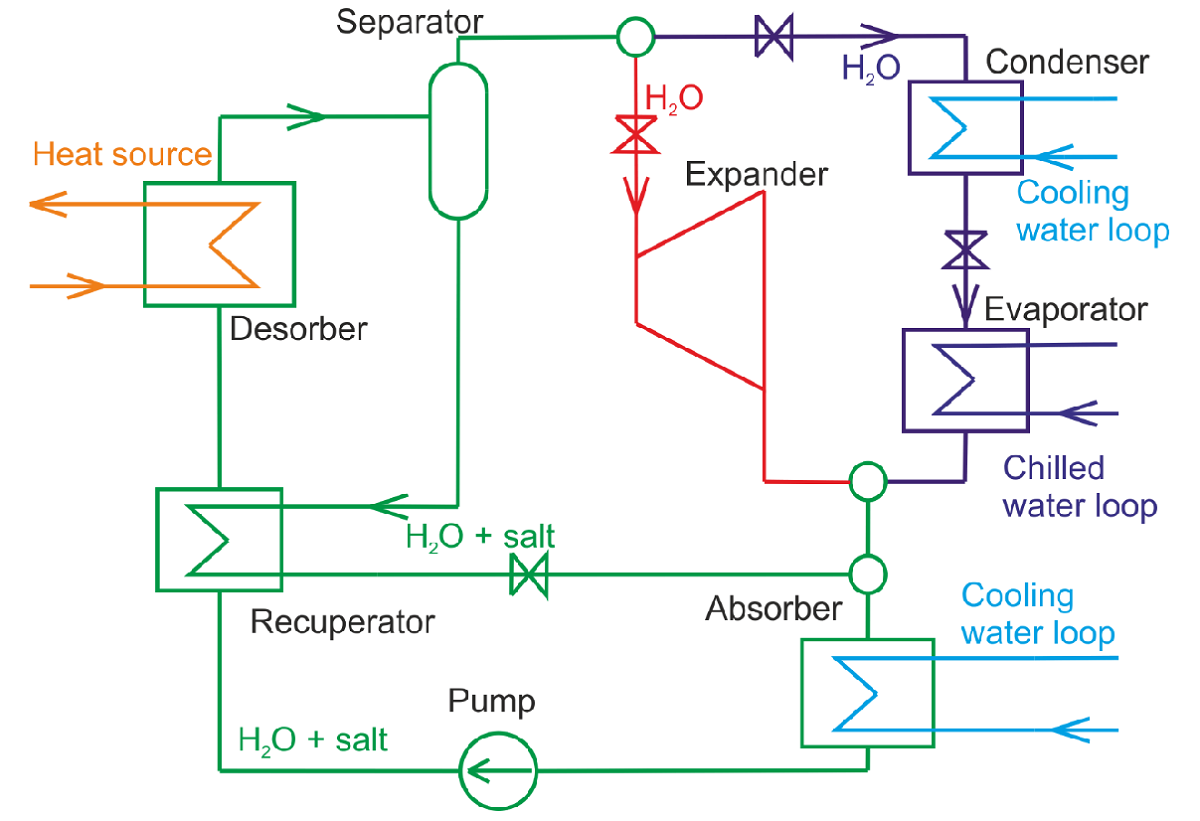Combined systems for power production and thermally activated cooling have a high potential for improving the efficiency and utilisation of thermal systems. In this regard, various configurations have been proposed and are comprehensively reviewed. They are primarily based on absorption systems and the implementation of multiple levels of complexity and flexibility. The configuration of the absorption power and cooling combined cycle proposed herein has wide commercial applicability owing to its simplicity. The configuration of the components is not new. However, the utilisation of aqueous salt solutions, the comparison with ammonia chiller and with absorption power cycles, the focus on parameters that are important for real-life applications, and the comparison of the performances for constant heat input and waste heat recovery are novel. The proposed cycle is also compared with a system based on the organic Rankine cycle and vapour compression cycle. An investigation of its performance proves that the system is suitable for a given range of boundary conditions from a thermodynamic standpoint, as well as in terms of system complexity and technical feasibility. New possibilities with regard to added power production have the potential to improve the economics and promote the use of absorption chiller systems.

